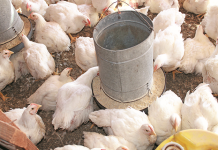Farming is a business, and should be treated as such, with proper attention paid to profit and loss, and other financial details. Unfortunately, it seems that many small-scale farmers do not seem to be doing so. Recently, I discussed the problem with a friend who is the new markets manager for a major bank. Part of his job is to come up with packages to suit emerging farmers, and he therefore has to understand the challenges faced by them.
I was quick to point out that farmers need affordable finance where collateral is not a requirement. Things aren’t that simple, he observed. The banks try hard to accommodate emerging farmers by coming up with tailor-made financial packages. His new product, for example, which is being tested in the small-scale livestock industry, lends money according to the size of the herd. If the farmer runs 10 cattle, the bank will lend money to buy 10 more, and all 20 will then be used as security.
“Sounds good to me,” I said. “What’s the problem?” The trouble, the bank manager replied, is that most emerging farmers do not treat their farming operations as businesses. Even though it is happy to offer this product, the bank still needs assurance that the farmers will be able to repay the loan. And many farmers, it seems, even those who have been on the land for more than a decade, do not keep proper records of their sales and expenditure.
The result is that they simply don’t know if they’re making a profit or a loss. They also continue to mix personal income with income from the farm. What’s more, said the bank manager, cattle farmers often don’t have production plans or breeding seasons. This is exactly the sort of information the bank requires to make a decision on whether or not to grant a loan application.
Emerging farmers cannot expect to take advantage of loans like these unless they do their part – getting their business basics right and keeping track of their money. Sadly, repayment can also be an issue. The National Emergent Red Meat Producers’ Organisation reports that it sometimes has to deal with farmers who are reluctant to repay their loans. It’s difficult for lending institutions to do business like this.













